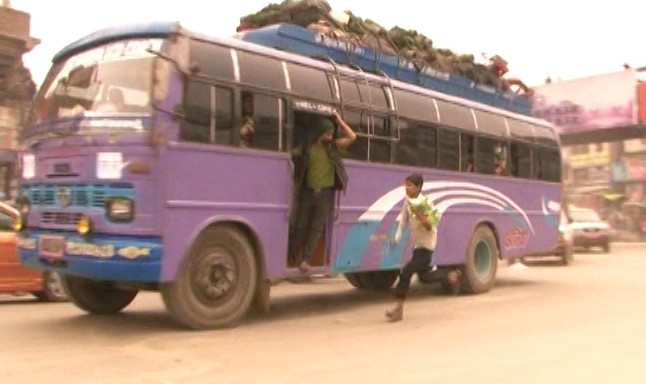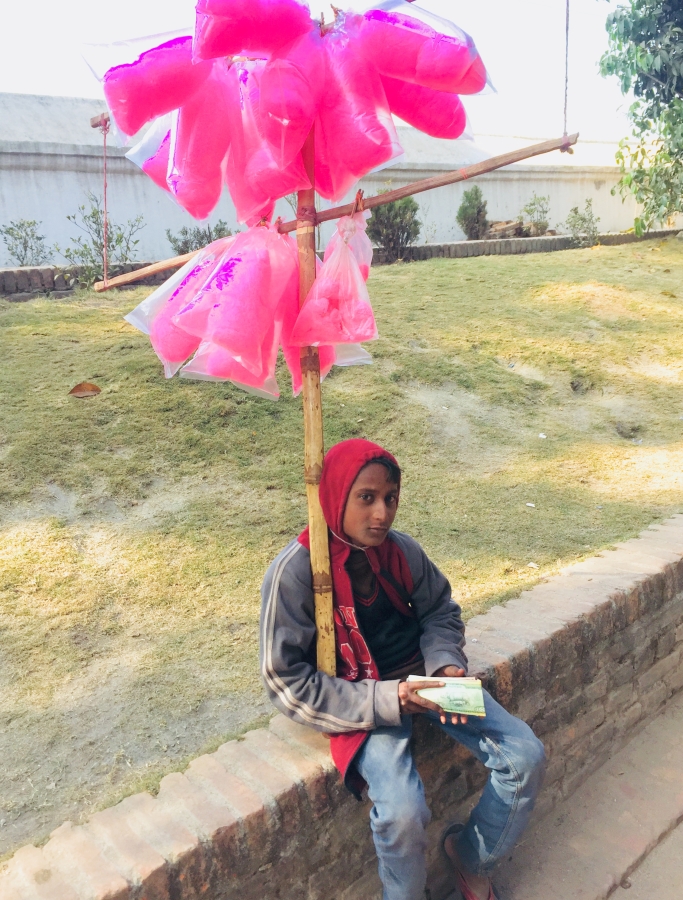
A child, working as one of the many highway hawkers in Kathmandu, selling water bottles in vehicles as seen in Kalimati. Photo: Salina Upreti
One Saturday morning, my phone popped up with a series of notifications. Among them was a message from my workplace, requesting to meet some official at 8 a.m. in Kalanki. It was already 7:30 a.m. but I was still in bed. Hurriedly, I got ready and took a microbus for the place. Luckily, I was on time but the person I was supposed to meet was running late.
I decided to walk (from Kalanki to Naikap) to kill time. That was when I saw a boy, around 10 or 11, standing in front of me, trying his best to sell food items. He was a ‘walking shop’, hanging foods on him and holding water bottles in his hand, one of the many children roaming as highway hawkers in Kathmandu’s streets.
I initiated a conversation with him, asking about himself. But, he was staring at me weirdly. I asked him how long he had been working as a ‘highway hawker’; it had been a year, he said. He told me about his family and that he worked alongside his mother and he ran away. I watched the boy trying to match his speed with a bus on a busy road: I got goosebumps. I tried to catch up with him, to listen to his incomplete story. But luck did not favor me at that time.
That morning, I saw many highway hawkers, most of them were children. I tried to develop more similar conversations, but my phone rang and I had to get back to work.
Every day, with sunrise, the Kalanki bus station—gateway to 59 of Nepal’s districts—is abuzz with people heading to various places. Night buses crammed with passengers and cargo trucks preparing to head to the Tarai fill the space.
Meanwhile, many children under the age of 18 wake up, get ready and sell goods to those traveling in vehicles plying on the highways. A recent survey found that 44.15 percent of child respondents said that they had to work as highway hawkers because they had no other sources of income, either to support themselves or their families.
To begin the business, one needs an initial investment, however little it is. But, 73.87 percent of children invest nothing while others invest Rs 100 to Rs. 1,000. The profit they make helps them survive or support their family. The report also shows that 77.66 percent of the child highway hawkers were illiterate.
Even among those who were literate, most had already dropped school. Children, who work as highway hawkers in Kathmandu, risk their lives just to manage food for the day. At the age of getting an education, they are compelled to work to meet basic needs. They are deprived of what they deserve as children: food, good education, and morality. They definitely deserve more.



Leave a Reply
You must be logged in to post a comment.